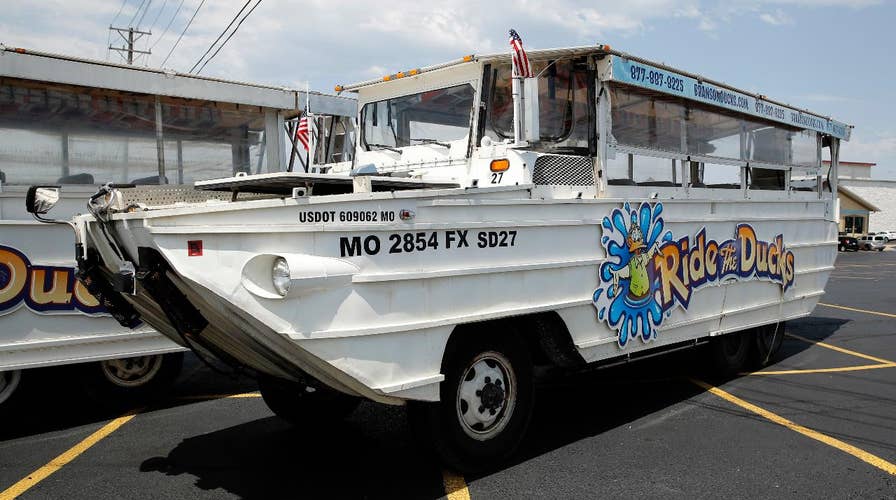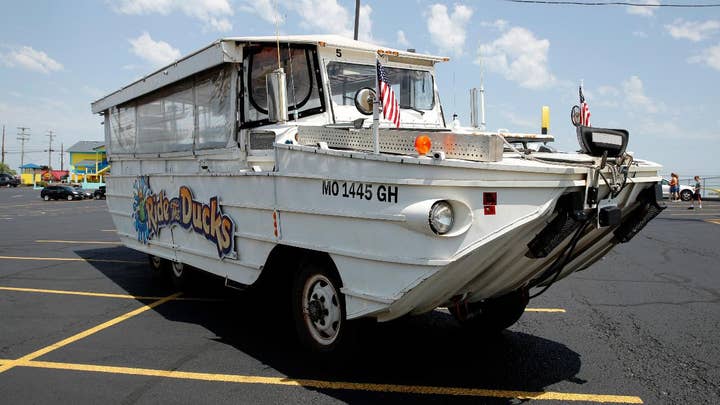Inspector says he tried to warn Missouri duck boat company
Inspector says he tried to ward duck boat company about design flaws before 17 people were killed in Missouri.
Conditions on a Missouri lake quickly went from calm to dangerous July 19, resulting in the capsizing of a duck boat and the deaths of 17 people, the National Transportation Safety Board said Friday in preliminary findings.
The NTSB gathered evidence from a video recorder system that divers recovered after the tourist boat sank in Table Rock Lake near Branson. Of the 31 passengers on board, 17 died.
While no conclusions have been reached as to what caused the accident, preliminary findings show that lake conditions changed within minutes, the board said.
According to the NTSB, the captain and driver boarded the vessel at 6:27 p.m. The video seems to show someone, only a minute later, stepping onto the rear of the vessel and advising the crew to take the water portion of the tour first. (Duck boats operate on both water and land.)
A minute later, with passengers boarding, the captain made a reference to looking at the weather radar prior to the trip.
The vessel entered the water around 6:55 p.m. at a time when the water appeared calm, the NTSB said. In fact, over the next five minutes the captain allowed four different children to sit in the driver's seat.
But suddenly just after 7 p.m., whitecaps rapidly appeared on the water and winds increased, the NTSB said. The captain returned to the driver's seat.
The driver lowered plastic side curtains and at 7:01 p.m. the captain made a comment about the storm.
At 7:03 p.m. the captain made a call on a handheld radio, but the content was unintelligible. A minute later, an electronic tone associated with the bilge alarm activated, until about a minute later when the captain reached down and the alarm stopped.
The captain made another call on a handheld radio at 7:05 but the content was again unintelligible.
Over the next couple of minutes, water splashed inside the passenger compartment.
At 7:07 p.m. an electronic tone associated with the bilge alarm activated again.
At 7:08 p.m. the inward-facing video recording ended as the vessel was still on the surface of the water.
The NTSB's investigation, proceeding on multiple tracks, will produce a "preliminary factual report" in the next few weeks, but a complete report is likely a year away.
The Associated Press contributed to this report.




